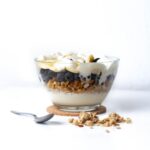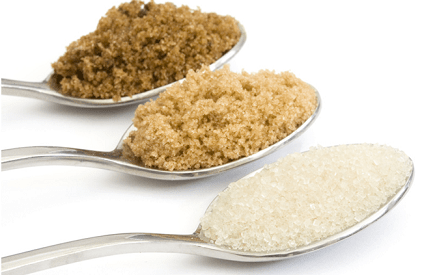Do you find yourself paying more for brown sugar than the “regular” white sugar? Have you ever wondered which is healthier for you?
In order to answer, let’s explain how sugar is manufactured. Yes, although it comes from sugar canes or beets, sugar does go through quite a bit of processing before we see it in its final form on supermarket shelves.
What you need to know:
The raw materials utilized are either sugar cane stalks or sugar beet (a root). Let’s talk sugar cane today:
- After the sugar cane stalks are harvested, they are chopped into small pieces
- The stalk pieces are pulverized in order to release the sugary cane juice.
- the juice usually has some impurities in it such as mud, pieces of stalk and other stuff, so it is filtered using both mechanical and chemical processes (using polyacrylamides).
- The purified liquid is boiled until the water evaporates.
- The remaining “juice” is heated once again and the sugar begins to crystallize. A side product that is left over is called mother liquor (it is the source of molasses)
- A centrifuge is used to separate individual sugar crystals.
The result is raw sugar. The crystals are relatively large and have a brownish tinge to them. Stay tuned folks, this is NOT brown sugar.
Raw sugar is shipped to a refinery for further processing to create the white sugar that we know:
- The raw sugar is heated and melts into a liquid again.
- The coloration is removed by using chemicals such as phosphoric acid and calcium hydroxide or calcium dioxide.
- The liquid is boiled one last time in order concentrate it into the fine white granulated crystals that make up white sugar, or refined sugar.
White and brown sugar are similar in calorie content, with 1/4 cup of white sugar containing 194 calories and 1/4 cup of packed brown sugar containing 209 calories. All of the calories in white sugar come from carbohydrates, of which there is 50 g. There are three types of carbohydrates: fiber, starch and sugar. All 50 g of these carbohydrates is sugar, all of which is in the form of sucrose. Nearly all of the calories in brown sugar come from carbohydrates as well, although one serving does contain 0.07 g of protein. However, this protein accounts for less than 1 of the 209 calories per serving. One serving of brown sugar contains 54 g of carbohydrates, nearly all of which are sugar. Brown sugar is primarily sucrose, although the added molasses provides small amounts, less than 1 g, of glucose and fructose.
|
TRAITS
|
BROWN/ SUGAR
|
ORDINARY WHITE SUGAR
|
|
Physical Appearance
|
Yellowish-brown sugar in the rich aroma of tropical sugarcane.
|
No flavor, taste, or color from natural sources.
|
|
Production Process
|
Produced by a precise co-crystallization process to retain natural flavor & color components.
|
Ordinary sugar manufacture process employs several chemicals.
|
|
Chemical Additives
|
At no stage in the production process, are any chemical additives added. It is free from any harmful chemicals like phosphoric acid, formic acid, sulfur dioxide, preservatives/bleaching agents. This results in a health-friendly and chemical-free sugar.
|
Processing involves a potpourri of chemicals; all finally showing their impact on our health in the long run. Sulfur carryover puts health at stake.
|
|
Nutrition Content
|
Apart from a pure and natural sweetness, it contains 187 mg calcium, 56 mg phosphorous, 4.8mg iron, 757 mg potassium, and 97 mg sodium per cup of sugar-all from natural sources.
|
Does not contain natural minerals.
|









